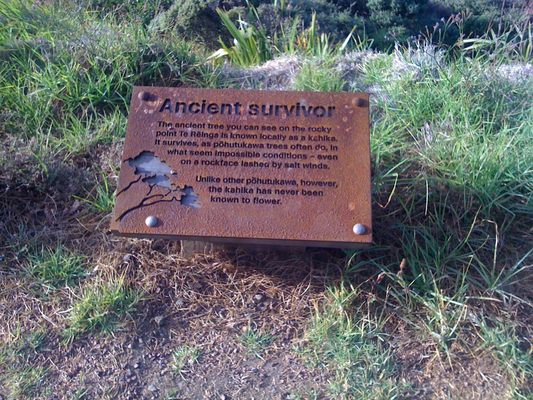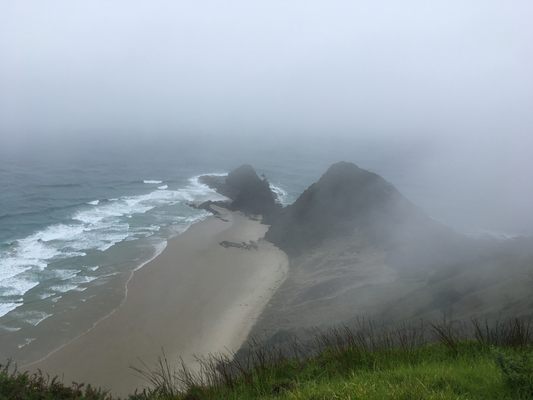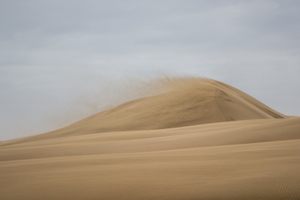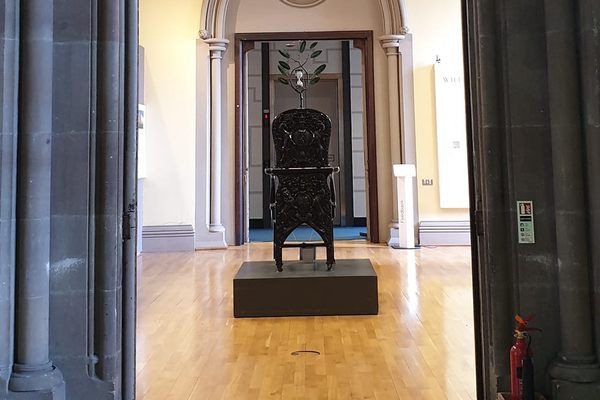About
Cape Reinga, or Te Rerenga Wairua in the Maori language, is New Zealand's northernmost lighthouse, located at the very end of Route 1 on the tip of North Island. This stunning landscape where the Tasman Sea meets the Pacific Ocean is considered by the Maori to be sacred ground, as it is the jumping-off point for souls of the recently deceased to journey to meet their ancestors in the spiritual homeland.
According to Maori legend, when a person dies their spirit makes the long journey north to this point, specifically to a gnarled pohutukawa tree that has managed to cling to a cliff while still bearing the brunt of the sea. Here the spirit slides down the roots of the tree into the sea, moving away from the mainland towards Three Kings Island and onto Ohaua, where it looks one last time to see the living left behind. From there, the spirits travel to the land of the ancestors, or Hawaiiki-A-Nui.
The pohutukawa tree at Cape Reinga is believed to be around 800 years old, and supposedly never blooms the characteristic bright red flowers these trees are known for. Near the tree, there used to be a small stream called Te Waiora-a-Tane. The waters from this were considered sacred, and washing the recently deceased's body with water from Te Waiora-a-Tane was a critical part of the traditional funerary rites. It is also believed that once the soul passes the point where the stream disappears into the sea it cannot return to the land of the living.
The Europeans on the island, specifically the Christian missionaries, thought this sacred water was all hocus pocus. Considering the need for a fresh water source, and that many Maori in the area at the time had converted to Christianity, the decision was made to cap the stream to make a reservoir. Little resistance was met when this was done, and yet nature has a way in things. As soon as the reservoir was finished, the stream disappeared, winding back underground out of sight. It now empties directly into the sea, and can only be seen at low tide.
Cape Reinga is also significant as the meeting place of the Tasman Sea and the Pacific Ocean. The Maori call this meeting the "Te Moana-a-Rehua." This clash of water is believed to be a male sea meeting a female sea, symbolizing the coming together of energy and the creation of life. It's a beautiful belief that the dying leave the world as seas meet to create life anew.
Related Tags
Know Before You Go
To get to Cape Reinga, head north via Route 1 from any major city to the (literally) the end of the road. Mileage signs along the driving route will mark the way. Parking is available but limited, especially during summer. (It may be difficult for large vans or campers to park due to space constrictions.) The tree itself cannot be accessed by foot, but there is a nice lookout point with a small metal sign. There are also several nice photographic vantage points along lighthouse footpath for the photographically savvy.
This site is very remote, so plan accordingly. There is no cell service in the area near the lighthouse, and the road leading to the lighthouse is quite windy in some places. Eating, drinking, or smoking are highly discouraged giving the spiritual importance of the place. Note that due to the difficulty of translating the Maori language, interpretive signs at the site may have different names and/or spellings.
Wild New Zealand: Exploring the North & South Islands
Stunning landscapes, unique wildlife, and rich Māori culture.
Book NowCommunity Contributors
Added By
Published
March 5, 2019
Sources
- http://www.doc.govt.nz/parks-and-recreation/places-to-go/northland/places/te-paki-recreation-reserve/cape-reinga-te-rerenga-wairua/heritage/
- https://nzhistory.govt.nz/media/photo/pohutukawa-flowers
- https://teara.govt.nz/en/tapa-whenua-naming-places/page-4
- http://teaohou.natlib.govt.nz/journals/teaohou/issue/Mao35TeA/c20.html



































